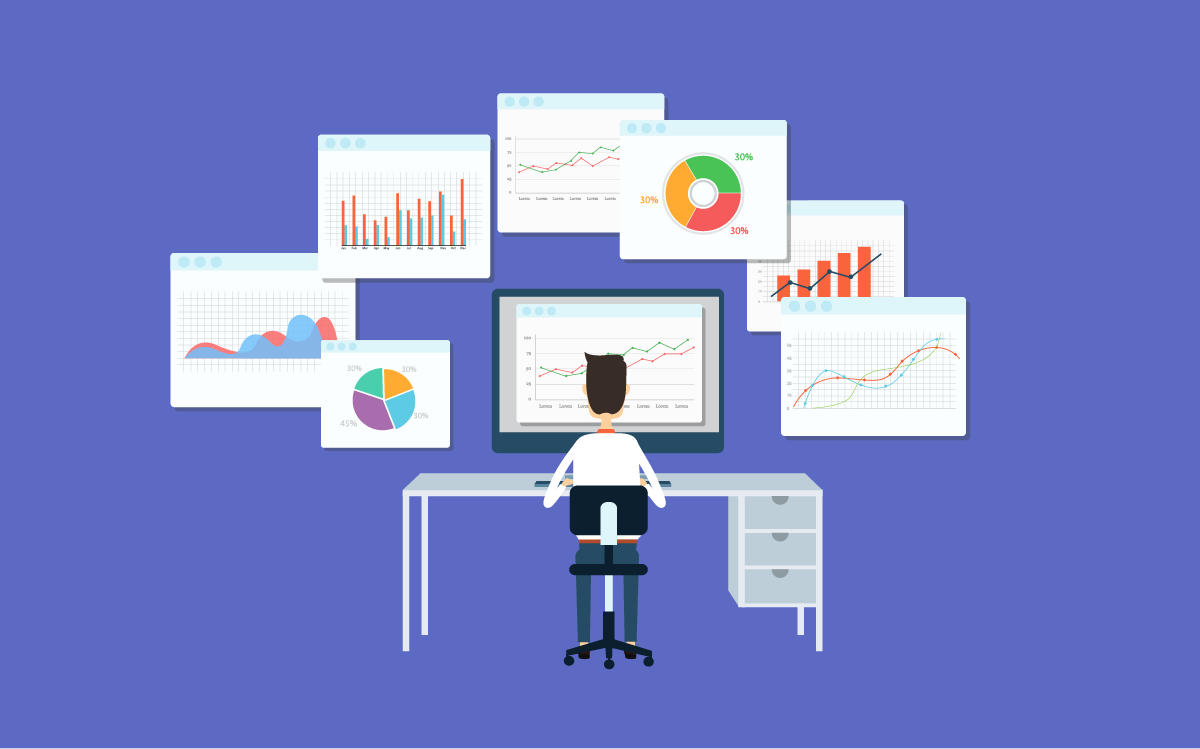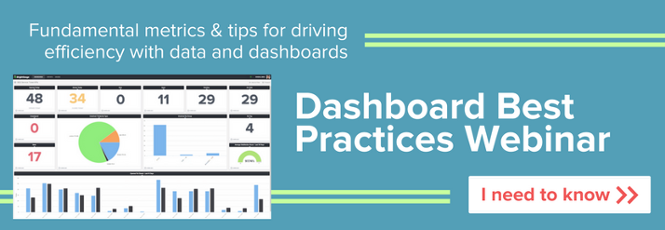How to Use a Data Dashboard to Light a Fire Under Your People

Employee performance is a major concern for organizations of all sizes. Companies that fail to improve employee performance will be competitively stagnant and struggle to meet their overall business goals. One key strategy for maximizing employee performance is to ensure that employees are actively “engaged” with their work.
Employee engagement is important because, as noted by Gallup, “Organizations that are the best in engaging their employees achieve earnings-per-share growth that is more than four times that of their competitors.” Engaged employees are productive, high-performing employees.
The question is this: How can you light a fire under your employees to get them engaged with their work? One trick is to use data dashboards to measure employee key performance indicators (KPIs) and motivate people.
Here are a few ways that you can use data dashboards to motivate employees to improve their performance:
1: Displaying data dashboards to encourage competitiveness
A little competitiveness among employees can be a very good thing for maximizing employee performance. Displaying a data dashboard that can be viewed in a common area of the office can be a very strong motivator for employees.
How does having a data dashboard where everyone can see it help increase employee engagement and productivity? Here’s a hypothetical example:
Say your sales department has two sales reps—we’ll call them Bill and John. Bill has been on the team for years, while John is a relatively new hire who wants to work his way to the top. In one week, John closes $80,000 in new deals for the company by working his contacts and leads as efficiently as possible. Bill, more comfortable in his position, works his leads less vigorously and only closes $33,000 in new deals—less than half of what John pulled in.
If there were a data dashboard showcasing the sales team’s KPIs for the last week where everyone could see them, Bill would see that John is crushing his numbers. Determined not to let the new guy show him up, Bill redoubles his efforts next week, working his contacts list and making deals that are more favorable to the company to show that he isn’t going to take this loss lying down.
This could be considered a “gamification” strategy for the workplace—creating a leaderboard of sorts that provides real-time feedback to employees. As noted in a Forbes article on gamification in the workplace, employees “can work toward real-time, measurable, meaningful targets, and get upper-level feedback as those targets are hit or missed.” This helps to drive engagement and employee performance.
Of course, when displaying such a data dashboard for everyone to see, it’s important to frame it as a way to gauge success—not to punish failure. Otherwise, a large disparity between two employees might discourage one or the other and have the opposite effect.
2: Using KPIs tracked in data dashboards for 1:1 meetings
Another way to use a performance dashboard is during employee performance reviews. Having an organized list of an employee’s most important KPIs can be enormously helpful during these one-on-one meetings.
For example, with an employee’s data dashboard on hand, you can show them their top KPIs and where they have opportunities to improve. Using the information contained in their performance dashboard, you can even create a personalized employee improvement program specific to that employee’s needs.
Creating personalized content for an employee to work on can be much more impactful than sending them to a random seminar with a dozen other people who have different performance issues.
3: Using employee performance dashboards to identify leaders
Aside from tracking employee performance KPIs to identify high performers and recognize their efforts, you can also use the data tracked in a dashboard to identify those with leadership potential.
By tracking certain leadership KPIs among your employees on their data dashboards, you can identify people who have the potential to succeed if promoted. It should be noted that these will be different KPIs from your productivity-related indicators that you would normally track—just because an employee is great at closing deals or making products doesn’t mean that they’ll be able to effectively lead other people in doing so.
Knowing that you’re tracking leadership KPIs and using that information to identify and promote new leaders from within your existing teams can be a powerful motivator. Employees who are looking to take on a leadership role will work to demonstrate those qualities (once they know which qualities to work on) and be more likely to stay on because of the advancement opportunities that exist.
These are just a few ways to take advantage of data dashboards (and the KPIs they show you) to improve employee performance by lighting a fire under them. For more information about data dashboards, KPI tracking, and how to use data in your business, reach out to the BrightGauge team!
Free MSA Template
Whether you’re planning your first managed services agreement, or you’re ready to overhaul your existing version, we've got you covered!



